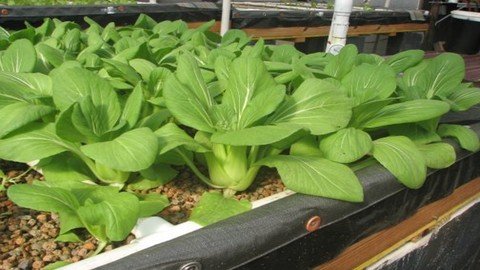
Free Download Vermiponics Farming
Published 7/2024
MP4 | Video: h264, 1920×1080 | Audio: AAC, 44.1 KHz
Language: English | Size: 788.23 MB | Duration: 1h 6m
Vermiponics garden, How to prepare vermicompost, Benefits of vermiponics etc.
What you’ll learn
Vermiponics garden
How to prepare vermicompost
Vermiponics-aquaponics without fish explained
Essentials in Vermiponics
Benefits of vermiponics
Requirements
Desire to learning more on farming systems
No special requirement
Description
In the realm of innovative gardening systems, Vermiponics stands out as a unique fusion of vermiculture and hydroponics. This method involves using worms to break down organic matter and create nutrient-rich worm castings, which act as a natural fertilizer for plant growth. Unlike traditional aquaponics systems that rely on fish waste for nutrients. Vermiponics allows plants to thrive in a soil- less environment without the need for fish. By harnessing the power of worms, Vermiponics provides a sustainable and efficient way to grow plants indoors or limited spaces. Worms plays a crucial role in Vermiponics by converting organic waste into valuable nutrients that plants can readily absorb. These hardworking creatures help a balanced ecosystem where plants receive essential nourishment for the growth. With Vermiponics, you can enjoy the benefits of both vermiculture and hydroponics, leading to healthier and more vibrant plants in your indoor garden or small – scale farming setup. To set up a vermiponics system effectively, you will need essential components such as worm beds, plant beds, and a well-designed water circulation system between them. Here are some key instructions for setting up your vermiponics system: prepare worm beds, create a suitable environment for worms to thrive and produce nutrient-rich castings. Set up plant beds use gravel or a hydroponic medium in plant beds to support optimal plant growth. Establish water circulation: design a system that allows water to flow between the worm beds and plant beds efficiently.
Overview
Section 1: Introduction
Lecture 1 Introduction
Lecture 2 What is vermiponics
Lecture 3 Benefits of vermiponics
Lecture 4 Aquaponics versus vermiponics
Section 2: Vermiponics Garden
Lecture 5 How it works
Lecture 6 Stuff you will need
Lecture 7 IBC modification
Lecture 8 Making the worm welcome
Lecture 9 Setting up the irrigation
Lecture 10 More on irrigation
Section 3: How To Prepare Vermicompost
Lecture 11 Setting up the worm bin
Lecture 12 Making the worm habit
Lecture 13 Starting to vermicompost
Section 4: Vermiponics- Aquaponics Without Fish Explained
Lecture 14 Introduction
Lecture 15 How vermiponics works
Lecture 16 Vermiponics system setup
Lecture 17 Choosing worm species
Lecture 18 Maintaining your vermiponics system
Lecture 19 Nutrient management in vermiponics
Lecture 20 Common issues and trouble shooting
Section 5: Conclusion
Lecture 21 The best plants for vermiponics
Lecture 22 Essentials of vermiponics
Farmers, farm managers, customers, agricultural agencies, directors, governments, consultants, general public etc.
Homepage
www.udemy.com/course/vermiponics-farming/
